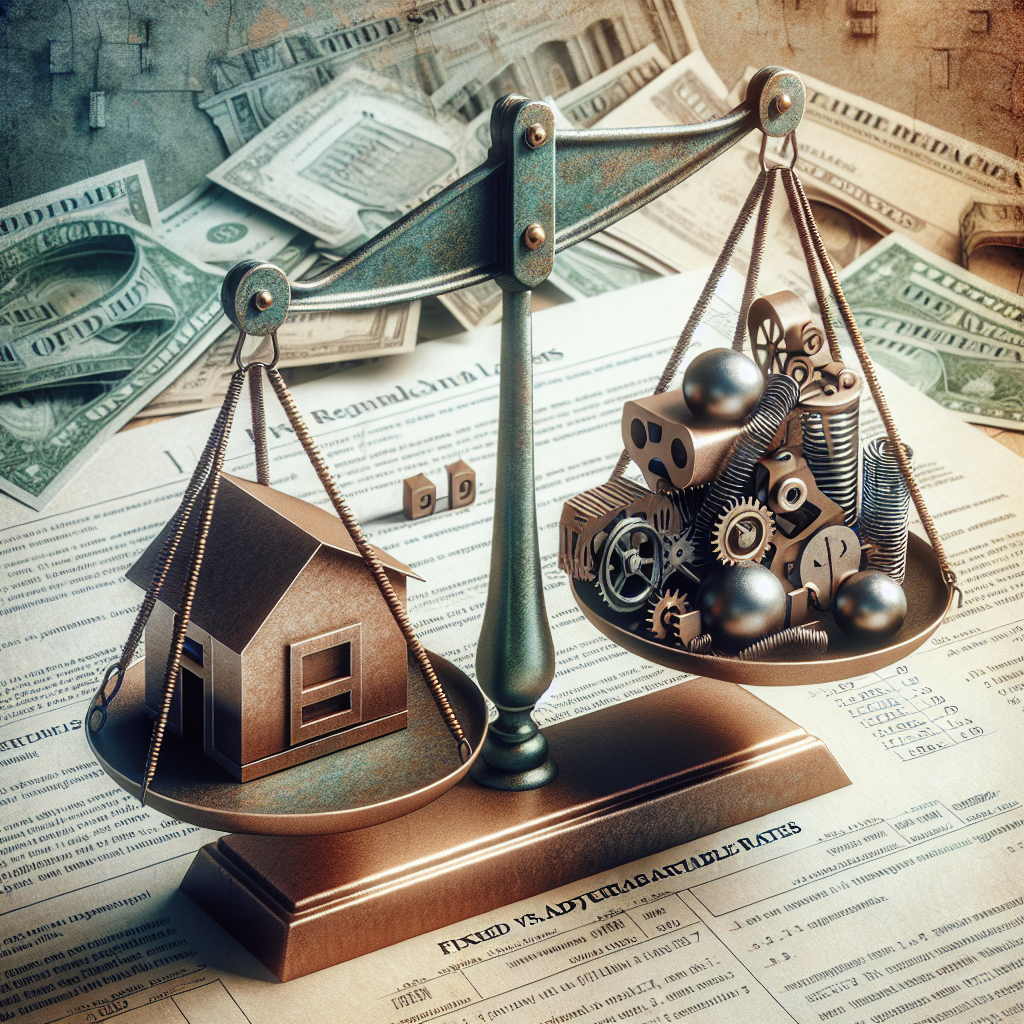When it comes to refinancing your mortgage, one of the most critical decisions you’ll face is whether to choose a fixed-rate or an adjustable-rate mortgage (ARM). Each option has its advantages and disadvantages, and understanding these differences can help you make an informed choice that best fits your financial situation. In this article, we’ll explore the key differences, advantages, and considerations of fixed and adjustable rates to assist you in making the right decision.
Understanding Fixed-Rate Mortgages
Fixed-rate mortgages are loans where the interest rate remains constant throughout the life of the loan. This means your monthly payments for principal and interest will also stay the same.
Advantages of Fixed-Rate Mortgages
-
Stability and Predictability: With fixed rates, you can accurately budget for your monthly expenses since your payment won’t change, regardless of market fluctuations.
-
Long-term Planning: Fixed-rate mortgages are ideal for homeowners who plan to stay in their homes long-term, ensuring stability in your payment schedule.
- Protection Against Rate Increases: A fixed-rate mortgage safeguards you from interest rate hikes that could happen over time, enabling you to lock in your rate during low-interest periods.
Disadvantages of Fixed-Rate Mortgages
-
Higher Initial Rates: Fixed-rate mortgages often start with a higher interest rate compared to ARMs, which can result in higher monthly payments initially.
- Limited Flexibility: If interest rates decline, you will not benefit from lower rates unless you refinance again, potentially incurring additional costs.
Understanding Adjustable-Rate Mortgages
Adjustable-rate mortgages, or ARMs, have interest rates that can fluctuate based on market conditions. Typically, an ARM starts with a lower initial interest rate, which remains fixed for a certain period (e.g., 5, 7, or 10 years) before adjusting periodically.
Advantages of Adjustable-Rate Mortgages
-
Lower Initial Rates: ARMs usually offer lower initial rates compared to fixed-rate mortgages, which can result in lower initial payments and more purchasing power.
-
Potential for Lower Long-term Costs: If interest rates remain stable or decline, homeowners can benefit from lower rates over time versus fixed-rate alternatives.
- Affordability: For those who plan to move or refinance before the fixed term ends, ARMs can be a more affordable option.
Disadvantages of Adjustable-Rate Mortgages
-
Uncertainty and Risk: The potential for rising rates after the initial fixed period introduces uncertainty in your future payments.
-
Complexity: Understanding the terms and conditions of an ARM, including the adjustment intervals and caps, can be complicated and overwhelming for some borrowers.
- Potential for Payment Shock: Once the fixed period expires, homeowners may experience significant payment increases due to rising interest rates, leading to financial strain.
Factors to Consider When Choosing Between Fixed and Adjustable Rates
When deciding between a fixed-rate and an adjustable-rate mortgage, several factors should influence your choice:
1. Length of Stay
Consider how long you plan to stay in your home. If you’re settling down for the long term, a fixed-rate mortgage may provide stability. Conversely, if you plan to relocate within a few years, an ARM may offer more advantages.
2. Market Conditions
Analyze current interest rates and market trends. If rates are projected to rise, locking in a fixed rate may be wise. However, if they’re expected to fall, an ARM could be beneficial.
3. Risk Tolerance
Assess your comfort level with financial risk. Those seeking predictability should favor fixed rates, while those willing to take a chance on fluctuating rates might consider an adjustable option.
4. Financial Situation
Consider your current financial health, including your ability to handle potential increased payments in the case of an ARM. Evaluate whether you can manage your budget effectively if your payments fluctuate.
Conclusion: Making the Right Choice for Your Refinancing Needs
Deciding between a fixed-rate and an adjustable-rate mortgage during refinancing is a critical choice that can significantly impact your financial future. Reflecting on your long-term plans, market conditions, risk tolerance, and financial stability will help guide your decision.
Regardless of the option you choose, thorough research, and possibly consulting a financial advisor, can aid in making the best choice for your personal circumstances. With the right approach, refinancing can lead to improved financial flexibility and growth, paving the way for a brighter financial future.

